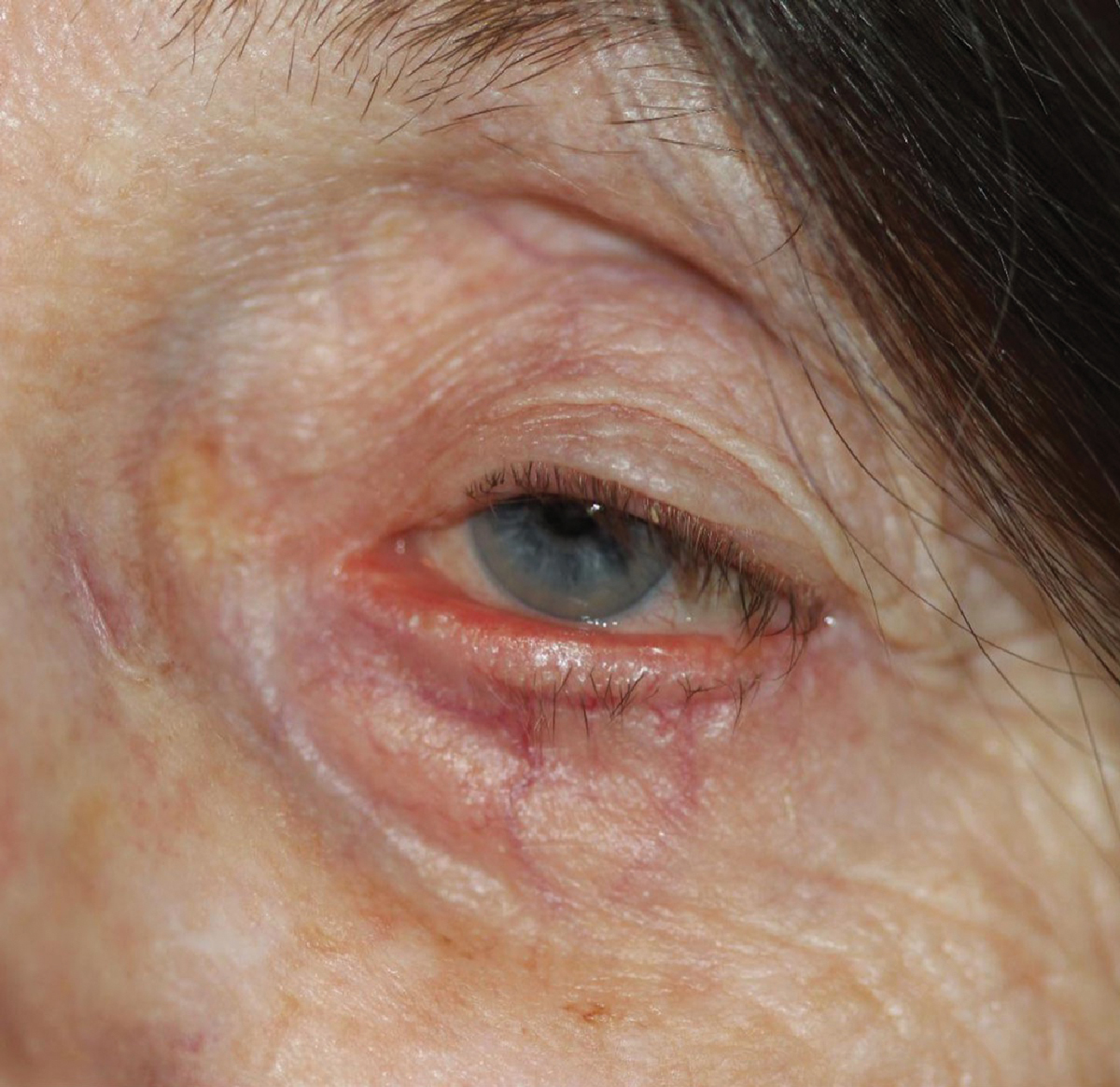 |
Patients with any of the following inflammatory conditions are at greater risk of developing involutional ectropion, according to a recent study: blepharitis, chalazion, hordeolum, dermatitis of the eyelid, chronic conjunctivitis, pterygium, dyslipidemia or rheumatic disease. Photo: Vera Howe, OD. Click image to enlarge. |
A relatively common, often age-related condition affecting 2% to 3% of the elderly population is involutional ectropion, characterized by an outward malposition of the eyelid margin due to tarsal laxity and atrophy of the orbicularis muscle and medial and lateral canthal tendons. The specific etiology remains unknown, as do potential risk factors. Recently, researchers sought to explore whether any chronic inflammatory conditions of the periocular and ocular surfaces, or other systemic conditions, might be associated with involutional ectropion given their anatomical proximity. The findings of their case-control study—the largest conducted to date on risk factors for involutional ectropion—were recently published in the journal Eye.
Using electronic medical records from 2001 to 2022 from a health service in Israel, the investigators identified 1,786 patients diagnosed with involutional ectropion (average age: 77; 60% men). Data from these patients were then compared to two control groups: one with senile cataracts and another with other ophthalmic diseases, each comprising 5,358 matched individuals.
The analysis revealed significant associations between involutional ectropion and several inflammatory diseases, including blepharitis (odds ratio, OR: 4.25), chalazion (OR: 3.01), hordeolum (OR: 2.27), dermatitis of the eyelid (OR: 1.69), chronic conjunctivitis (OR: 3.49), pterygium (OR: 2.21), hypertension (OR: 1.5), dyslipidemia (OR: 1.46) and rheumatic disease (OR: 1.9). All were found to be independent risk factors.
“Blepharitis was associated with a three- to fourfold increased risk for the development of involutional ectropion,” the study authors reported in their paper. “Similarly, ocular inflammatory conditions, notably chronic conjunctivitis, were associated with a comparable elevation in risk.” Additionally, “Chronic systemic inflammatory conditions emerged as significant risk factors, conferring a 1.5-fold increase in the likelihood of developing involutional ectropion,” they noted.
The association between chronic conjunctivitis and involutional ectropion may be related to the act of repeated eye rubbing, which can weaken eyelid structures and promote the upregulation of MMP expression due to mechanical stress, the researchers proposed. As for pterygium, the observed connection with eyelid laxity could be explained by a shared environmental etiology, as prolonged exposure to ultraviolet-b radiation has been implicated in studies for both conditions.
Less speculation exists about the link between involutional ectropion and systemic conditions; in fact, only one other study has ever investigated the association between systemic conditions and ectropion. Those researchers found “an association between involutional ectropion and current smoking, hypertension, diabetes and stroke,” cited the authors of the present study. “Our study supports these observations, revealing a significant association between involutional ectropion and hypertension and additionally identifying a link with dyslipidemia,” they continued. “The vascular mechanisms inherent to these conditions provide a conceivable basis for these associations.”
Overall, the authors conclude that through identifying chronic inflammatory periocular, ocular and systemic conditions as independent risk factors for involutional ectropion, the findings of this case-control study “provide compelling evidence for the essential role of inflammation in the development of involutional ectropion.”
Kerman T, Lev Ari O, Hazan I, Amitai N, Tsumi E. The role of inflammatory periocular, ocular surface and systemic diseases in involutional ectropion. Eye (Lond). July 31, 2024. [Epub ahead of print]. |


